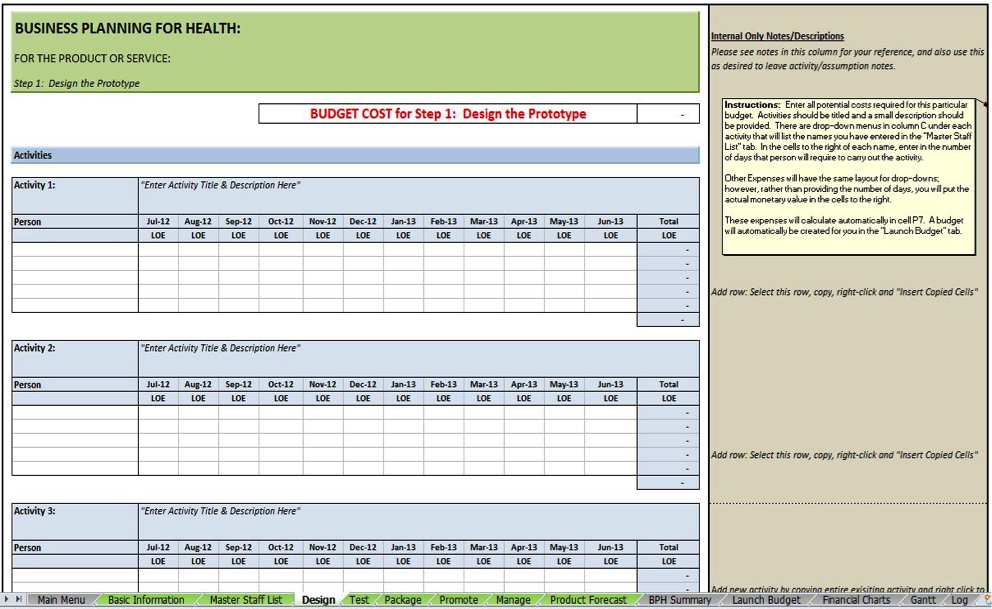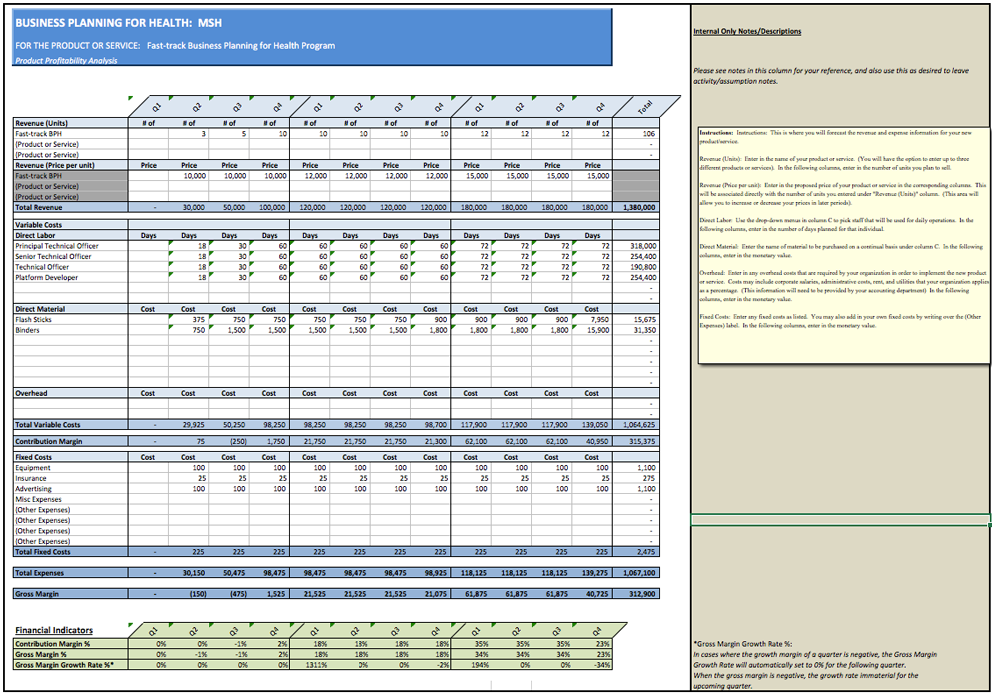Plan for Design and Launch: Implementation
Once you have identified the team of persons who will work on the design and launch of your new SBCC product, service or intervention, it is important to note the activities that will be carried out by these individuals.
There are traditionally five steps to launching a new product or service. These are:
1 Design the prototype
2 Test the prototype
3 Package the product or service
4 Promote the product or service
5 Manage the launch
Steps to Design and Implementation Worksheet
Instructions: Provide answers to question 1-5.
- Design the prototype. What activities did you and your team carry out to design the new SBCC product, service or intervention that you are introducing?
- Test the prototype. What activities did you and your team carry out to test the mock-up of the new product, service or intervention, to make sure it would meet the needs of your target population?
- Package the product, service or intervention. What activities did you and your team carry out to make sure the product, service or intervention was packaged appropriately?
- Promote the SBCC product, service or intervention. What activities did you and your team carry out to promote the sale or use of the new product, service or intervention?
- Manage the launch. What activities did you and your team carry out to manage the launch event?
Now that you have named each person who will work to develop the new SBCC product, service or intervention, and listed the activities to be carried out for each step in the design and implementation process, a Scope of Work (SOW) is needed for each team member. Each SOW should provide a clear and concise description of the requirements for the successful completion of the activities for which the team member is responsible. SOWs are used to ensure that all required elements of the activity will be completed. They also help those responsible for budgeting to accurately forecast costs and allocate the resources needed to complete each activity.
Scope of Work Template
Scope of Work for (Name of Team Member)
Expected Deliverables: Describe the deliverables to be produced by the individual during the design and launch period.
Activities: Describe the specific activities this person will carry out during the design and launch period.
Level of Effort (LOE): Calculate and note the number of days required for this person to undertake his or her assigned responsibilities.
Dates: Proposed date on which the team member should begin work and by which the deliverables should be produced.
Financial Modeling Tool (Design, Test, Package, Promote, Launch - Staff, LOE, Other Direct Costs)
Instructions: Read and complete the following steps.
- Refer back to the Financial Modeling Tool.
- Locate the five tabs: "Design," "Test," "Package," "Promote" and "Manage" to enter activities for each step, the staff that will be working on those activities and their respective LOE for each activity. NOTE: Persons will appear on drop-down menu generated from Master Staff List.
- The information used for populating these cells and drop-down menus comes directly from the SOWs you have prepared.
Sample Financial Modeling Tool
Use this Sample Financial Modeling Tool as an example of how to execute your business plan's financial model.
All of the activities you have scheduled under the tabs of the Financial Modelling Tool generate a Gantt Chart, found under the “Gantt” tab.
The Gantt Chart displays the steps and major activities that must be carried out and the chronological order in which these activities must be completed to ensure the successful, timely launch of the SBCC product, service or intervention.
The Gantt Chart is included to illustrate what will happen throughout the design and introduction stages. It should show the month or quarter in which each activity or cluster of activities will begin and end and indicate who is responsible for the activity and/or deliverable.
Financial Modeling Tool (Gantt)
Instructions: Read and complete the following steps.
- Refer back to your Financial Modeling Tool.
- Go to tab labeled "Gantt." See instructions in the tab. The Activities will self-populate once you fill in the five tabs: "Design," "Test," "Package," "Promote" and "Manage"; and the timeline will automatically be highlighted.




